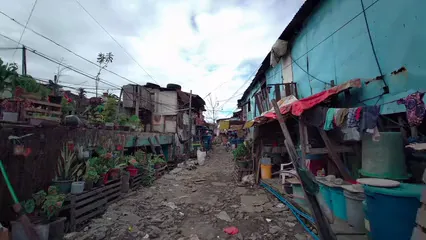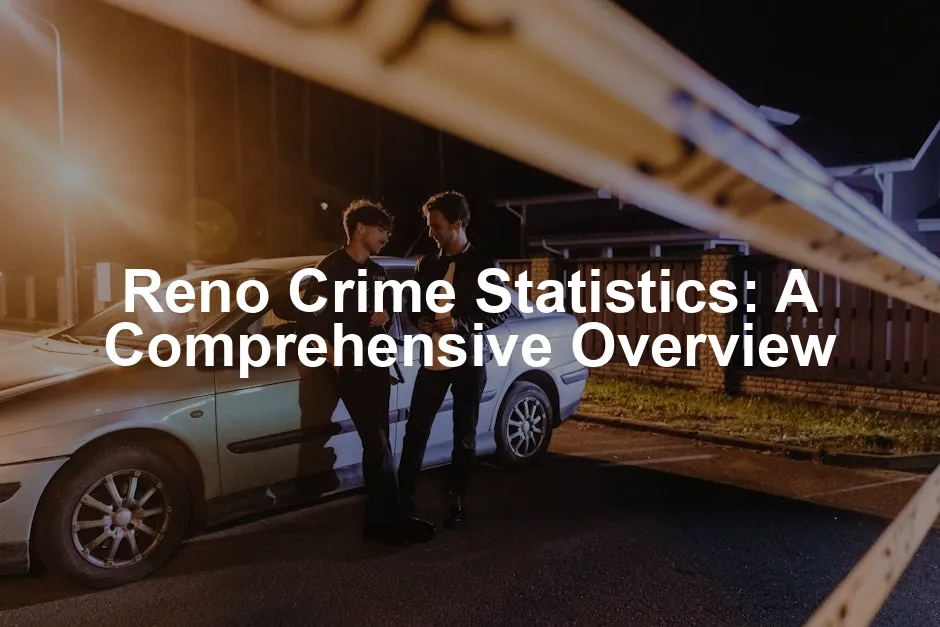Introduction
Reno, Nevada, often dubbed “The Biggest Little City in the World,” has a reputation that goes beyond its casinos and stunning views. Unfortunately, crime is a significant topic of conversation among locals and visitors alike. Understanding crime statistics in Reno is crucial for both residents and tourists to make informed decisions about safety and community planning. This article aims to provide a detailed analysis of crime statistics in Reno, highlighting trends, types of crime, neighborhood safety, and comparisons with national averages.
Reno’s crime landscape can be quite complex. For anyone considering a move to the area or planning a visit, being aware of the local crime rates can help shape your experience. Are you thinking about strolling down Virginia Street after dark? Or perhaps enjoying a late-night snack at a local diner? Knowing the crime statistics can help you gauge the potential risks involved.
In this comprehensive overview, we’ll analyze the different crime categories, explore specific crime rates, and compare Reno’s statistics with those of other cities. By the end, readers will gain valuable insights into the safety of various neighborhoods in Reno, allowing them to navigate the city confidently. Remember, knowledge is power, especially when it comes to your personal safety and the well-being of the community.

Overview of Crime Rates in Reno
Crime in Reno can be broadly classified into two primary categories: violent crime and property crime. Understanding these categories helps paint a clearer picture of the safety dynamics in the city.
Violent crime refers to offenses that involve force or the threat of force. This category includes serious offenses such as:
- Murder
- Rape
- Robbery
- Aggravated assault
On the flip side, property crime involves the theft of property without the threat of violence. Typical examples of property crimes include:
- Burglary
- Larceny-theft
- Motor vehicle theft
Reno’s overall crime rate is concerning. With a total crime rate of 8,559 reported incidents per 100,000 people, it stands 35% higher than the national average. Diving deeper, violent crime rates have been reported at 1,565 incidents (572 per 100,000 residents), which is approximately 54.6% higher than the national average. Property crime is also alarming, with 6,994 incidents (2,556 per 100,000 people), exceeding the national average by about 30.8%.
Here’s a quick comparison to put things in perspective:
| Statistic | Reno (per 100k people) | Nevada (per 100k people) | National (per 100k people) |
|---|---|---|---|
| Total Crime | 3,127 | 2,834 | 2,324 |
| Murder | 4.0 | 6.8 | 6.3 |
| Rape | 101.2 | 58.9 | 40.0 |
| Robbery | 109.6 | 86.1 | 66.1 |
| Assault | 357.0 | 302.3 | 268.2 |
| Violent Crime | 572 | 454 | 370 |
| Burglary | 406.7 | 436.1 | 269.8 |
| Theft | 1,750.3 | 1,453.5 | 1,401.9 |
| Vehicle Theft | 398.7 | 490.5 | 282.7 |
| Property Crime | 2,556 | 2,380 | 1,954 |
These statistics reveal that Reno faces significant challenges regarding safety. Understanding the nuances of these numbers is essential for residents and visitors alike. Awareness can lead to better safety practices and a proactive approach to community involvement. As we move forward, we’ll dive deeper into the specific crime statistics and what they mean for the neighborhoods within Reno.

Comparison with National and State Averages
Reno’s crime statistics paint a concerning picture. The total crime rate here is a staggering 35% higher than the national average. For residents and visitors, these numbers are more than mere figures; they reflect the safety of the community. Understanding how Reno compares to state and national statistics is crucial for grasping the overall risk levels.
Here’s a comparison that illustrates this:
| Statistic | Reno (per 100k people) | Nevada (per 100k people) | National (per 100k people) |
|---|---|---|---|
| Total Crime | 8,559 | 6,995 | 2,324 |
| Murder | 4.0 | 6.8 | 6.3 |
| Rape | 101.2 | 58.9 | 40.0 |
| Robbery | 109.6 | 86.1 | 66.1 |
| Assault | 357.0 | 302.3 | 268.2 |
| Violent Crime | 572 | 454 | 370 |
| Burglary | 406.7 | 436.1 | 269.8 |
| Theft | 1,750.3 | 1,453.5 | 1,401.9 |
| Vehicle Theft | 398.7 | 490.5 | 282.7 |
| Property Crime | 2,556 | 2,380 | 1,954 |
This table highlights in bold the disparities that exist between Reno and both state and national averages. For instance, while Reno’s murder rate is lower than the state average, it’s still alarming when compared to the national figure. The same can be said for rates of rape and assault, where Reno stands out with significantly higher figures.
In terms of property crime, Reno also exceeds national averages, particularly in categories like theft and vehicle theft. This information is vital for anyone considering a move to the area or a visit. For a deeper understanding of how Reno compares to state averages, check out the detailed analysis on comparing employment statistics in Duval County vs state averages.
Understanding how Reno’s crime statistics stack up against state averages can provide valuable insights for residents and visitors. comparing employment statistics in Duval County vs state averages

Detailed Crime Statistics
Violent Crime Statistics
Reno’s violent crime statistics reveal a troubling trend. The city has seen an increase in serious offenses like murder, rape, robbery, and assault. Here are the specific numbers:
- Murder: 4.0 incidents per 100,000 people
- Rape: 101.2 incidents per 100,000 people
- Robbery: 109.6 incidents per 100,000 people
- Assault: 357.0 incidents per 100,000 people
To see how Reno stacks up against the national and state averages, check out the table below:
| Crime Type | Reno (per 100k) | Nevada (per 100k) | National (per 100k) |
|---|---|---|---|
| Murder | 4.0 | 6.8 | 6.3 |
| Rape | 101.2 | 58.9 | 40.0 |
| Robbery | 109.6 | 86.1 | 66.1 |
| Assault | 357.0 | 302.3 | 268.2 |
| Violent Crime | 572.0 | 454.0 | 370.0 |
These statistics indicate a violent crime rate in Reno that is significantly above the national average. Rape rates are particularly concerning, with Reno showing a figure over 150% higher than the national average. Even though the murder rate appears lower than the state average, the overall violent crime rate still reflects a serious issue within the community.

Property Crime Statistics
Property crime presents another layer of concern in Reno. This category includes offenses such as burglary, theft, and vehicle theft. Here are the property crime statistics for Reno:
- Burglary: 406.7 incidents per 100,000 people
- Theft: 1,750.3 incidents per 100,000 people
- Vehicle Theft: 398.7 incidents per 100,000 people
Here’s a comparative look at property crime:
| Crime Type | Reno (per 100k) | Nevada (per 100k) | National (per 100k) |
|---|---|---|---|
| Burglary | 406.7 | 436.1 | 269.8 |
| Theft | 1,750.3 | 1,453.5 | 1,401.9 |
| Vehicle Theft | 398.7 | 490.5 | 282.7 |
| Property Crime | 2,556.0 | 2,380.0 | 1,954.0 |
As the table shows, Reno’s property crime rate is alarmingly high compared to national averages. The theft rate is particularly striking, indicating that residents face a greater risk of property crimes than those in many other parts of the country.

In summary, the crime statistics in Reno reveal substantial challenges. The community must address these issues urgently to foster a safer environment for residents and visitors alike. Awareness of these numbers can lead to proactive safety measures, ensuring that Reno remains a welcoming place to live and visit.
Yearly Trends and Changes
Reno has seen fluctuations in its crime statistics over the past few years. Overall, the total crime rate has decreased by around 5.2% year over year. However, violent crime has seen a slight uptick of 3.4%. In contrast, property crime has dropped significantly by 6.9%.
Several factors contribute to these trends. The booming economy has attracted more residents, leading to a population surge. This growth can sometimes correlate with rising crime rates, as increased density often brings challenges. Additionally, events like the COVID-19 pandemic have impacted economic conditions, which can affect crime rates.
In summary, while Reno’s crime statistics show a mixed bag, awareness of these trends is essential for residents and potential newcomers alike.

Local Perspectives on Crime
Community Sentiment
According to a recent survey by AreaVibes, only 38% of Reno residents feel safe walking alone at night. This statistic reflects a significant sentiment of unease among locals. Many residents have shared their experiences, emphasizing the need for improved safety measures.
One resident remarked, “I love living here, but I do think twice before heading out after dark.” Another added, “It feels like every week, there’s a new headline about crime. It can be concerning.” Such anecdotes underscore the community’s desire for heightened security and awareness.
To enhance your personal safety while navigating Reno, consider investing in a Personal Safety Alarm. This handy device can alert others in emergencies, giving you peace of mind during your strolls.

Law Enforcement Response
The effectiveness of local law enforcement has been a topic of discussion among residents. Feedback indicates that 44% of locals feel that police are very visible and responsive. However, some express concerns about delays in response times.
Reno has a law enforcement force of approximately 355 officers, equating to about 1.5 officers per 1,000 residents. This ratio is lower than the national average, which can impact crime prevention efforts. Community trust in law enforcement is essential for effective crime reduction, and residents have voiced their hopes for better engagement from police.
For those looking to enhance personal safety while out and about, consider a Smart Door Lock. This innovation allows you to secure your home with ease and monitor access remotely.
In conclusion, the local perspectives on crime in Reno reveal a complex dynamic. While there are positive sentiments regarding law enforcement, the overall feelings of safety are mixed. Understanding these community sentiments can help shape future safety initiatives and foster a more secure environment for all.

Neighborhood Crime Rates
Overview of Neighborhoods
Reno, with its vibrant neighborhoods, has a diverse landscape of crime rates. Some areas glitter like the neon lights of the casinos, while others might give you pause before taking a late-night stroll.
In Reno, neighborhoods can be broadly categorized into high-crime and low-crime zones. The Northeast and South Central areas tend to report higher crime rates, with incidents often tied to economic challenges. For instance, the Northeast neighborhood has seen escalating reports of property crimes, with thefts and burglaries being commonplace.
On the flip side, South Reno and the North Valleys have emerged as pockets of relative safety. Residents here enjoy a quieter lifestyle, with crime rates significantly lower than the city average. For example, South Reno has a property crime rate of about 1,200 incidents per 100,000 people compared to the 2,556 city average.

To further enhance safety in your home, consider installing a Home Security Camera System. With real-time monitoring, you can keep an eye on your property and deter potential intruders.
Here’s a snapshot of notable neighborhoods:
- Northeast Reno: High crime, particularly in property offenses, with rates soaring above 3,000 incidents per 100,000 people.
- South Reno: Low crime rates, around 1,200 incidents per 100,000 people, making it a desirable location for families.
- South Central: A mix of economic challenges, resulting in a higher frequency of both violent and property crimes.
- North Valleys: A growing area with better safety statistics, attracting newcomers seeking a quieter environment.
Understanding these dynamics is essential for anyone considering a move or a visit to Reno. Local crime statistics can act as a compass, guiding you toward safer choices.

Safety Rankings and Recommendations
When it comes to safety, not all neighborhoods are created equal. Based on crime statistics, here’s a safety ranking for Reno’s neighborhoods:
- South Reno: A top pick for families and newcomers, with low crime rates and community engagement.
- North Valleys: A balanced choice, offering safety and affordability, perfect for those starting out.
- South Central: An area to approach with caution; while it has amenities, crime rates can be unsettling.
- Northeast Reno: A high-crime area, not typically recommended for families or those needing a sense of security.
To enhance safety in any neighborhood, residents are encouraged to engage with local community programs. These initiatives foster connections among neighbors, create watch groups, and promote safety awareness.
Here are some quick tips for personal safety:
- Stay Informed: Familiarize yourself with local crime trends. Online platforms like AreaVibes provide updated crime statistics and safety ratings.
- Community Engagement: Join neighborhood watch programs. Building relationships with neighbors can create a safer environment.
- Stay Alert: When out and about, especially at night, stay aware of your surroundings. Avoid distractions like texting while walking.
- Secure Your Home: Invest in good locks, security systems, and outdoor lighting. A well-lit home can deter potential burglars.

By choosing the right neighborhood and taking proactive safety measures, residents can enjoy all that Reno has to offer while minimizing risks. Don’t forget to keep a First Aid Kit handy at home for emergencies! You never know when you might need it.

Potential Causes for Crime
Socioeconomic Factors
Reno’s crime rates can be deeply influenced by socioeconomic conditions. A high population density, coupled with economic disparities, plays a significant role in shaping crime statistics. As the city grows, its population density has reached approximately 2,304.7 people per square mile, much higher than the national average of 90.6. This boom can lead to pronounced income disparities and, consequently, higher crime rates.
The cost of living in Reno is also a contributing factor. With an average rent of around $1,107 per month, prices exceed the national average of $949. Such financial pressures can lead to desperation, pushing individuals toward criminal activities. A significant portion of the population, about 13.6%, lives below the poverty line, which exacerbates these issues.

Investing in personal safety tools, like a Tactical Flashlight, can also help you feel more secure in uncertain situations. Being prepared is half the battle!
The correlation between economic stress and crime is clear. Areas with higher poverty rates often experience elevated crime incidents. For example, neighborhoods struggling economically tend to see more property crimes as individuals seek ways to survive.
In summary, Reno’s crime rates are not just random numbers; they reflect the underlying socioeconomic issues that affect community safety. Addressing these root causes through community programs and economic initiatives may help reduce crime and foster a safer environment for residents. Understanding these dynamics is key to navigating Reno’s landscape effectively.
Other Contributing Factors
Crime rates don’t just pop up like mushrooms after the rain—they stem from various underlying issues. One major factor is mental health. With limited access to mental health resources, individuals may turn to crime as a way to cope with their struggles. It’s like trying to put out a fire with gasoline—definitely not the way to go!
Education plays a significant role, too. When people lack access to a quality education, opportunities for stable employment dwindle. A person with fewer job prospects may be more likely to resort to illegal activities. It’s like being stuck in a game of Monopoly without enough money to buy properties; you might just start stealing from the bank!
Community resources also matter. Strong community ties can deter crime. When residents feel connected, they’re more likely to watch out for one another. Think of it as a neighborhood watch but with a friendly barbecue vibe. Conversely, communities without these resources can struggle, leading to increased crime rates. It’s essential to recognize that crime statistics reflect the overall health of the community, not just the actions of a few individuals.

Crime Map Overview
Visual Representation
The Reno crime map is like a colorful quilt, each patch representing different neighborhoods and their respective safety levels. Areas with high crime rates are often marked in vibrant reds. Meanwhile, the low-crime neighborhoods sport soothing greens, giving residents a sense of security.
This map is an invaluable tool for both residents and visitors. It allows individuals to understand the crime dynamics in various neighborhoods. Are you planning a night out in downtown Reno? A quick glance at the map can help you decide if it’s worth the trip or if you should consider a more low-key evening in South Reno.
To further enhance your safety during outings, consider downloading a Personal Safety App. This technology can help you alert friends or family if you feel unsafe.
Navigating the map reveals patterns—like the hotspots for certain types of crime. For instance, you might notice that property crimes are more frequent in certain areas, while violent crimes may be more concentrated elsewhere. This knowledge can guide your decisions, whether you’re hunting for a new apartment or planning a stroll through the city.

In short, the Reno crime map is not just a collection of data; it’s a visual representation of the community’s safety landscape. With this tool, residents can make informed decisions about where to live, work, and play, ensuring they stay one step ahead of any potential trouble.
Conclusion
In summary, crime statistics in Reno paint a complex picture of safety. With the overall crime rate significantly above the national average, understanding these numbers is crucial for residents and visitors alike. The insights gleaned from the analysis of crime trends, neighborhood specifics, and contributing factors reveal a community facing challenges but also opportunities for improvement.
Staying informed about crime statistics is vital. Knowledge empowers residents to protect themselves and engage in community initiatives aimed at reducing crime. Whether it’s participating in local safety programs or simply being aware of your surroundings, each effort counts.
While Reno’s crime landscape may seem daunting, there is hope. By fostering community connections, advocating for mental health resources, and ensuring access to education, residents can work together to create a safer environment. Awareness and proactive measures can help transform Reno into the vibrant, secure community it strives to be. Let’s roll up our sleeves and tackle these challenges head-on!
FAQs
What is the overall crime rate in Reno?
Reno’s overall crime rate is 35% higher than the national average, with approximately 8,559 reported incidents per 100,000 people.
How does Reno’s crime rate compare to other cities in Nevada?
Compared to nearby cities, Reno has a higher crime rate than Sparks but is lower than Las Vegas, making it a mixed bag in relation to its neighbors.
What should I do if I feel unsafe in my neighborhood?
If you feel unsafe, consider these practical tips: stay aware of your surroundings, avoid distractions like phones, and engage with local community safety programs. Trust your instincts!
Are there any community programs aimed at reducing crime in Reno?
Yes, Reno has several community initiatives focused on crime reduction, including neighborhood watch programs and partnerships with local law enforcement to enhance safety.
How can I access the latest crime statistics for Reno?
You can find updated crime statistics on local law enforcement websites and state crime reports. Websites like AreaVibes also offer easy-to-read crime data for Reno.
Please let us know what you think about our content by leaving a comment down below!
Thank you for reading till here 🙂
All images from Pexels




